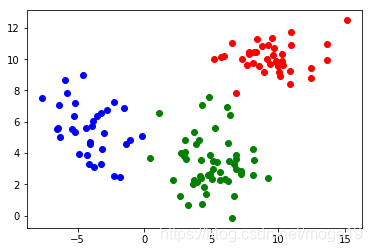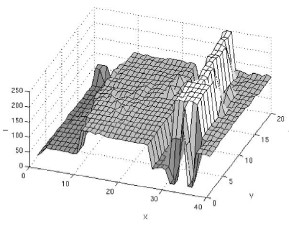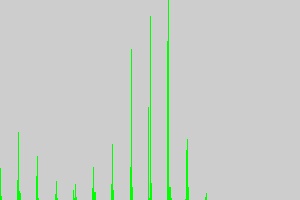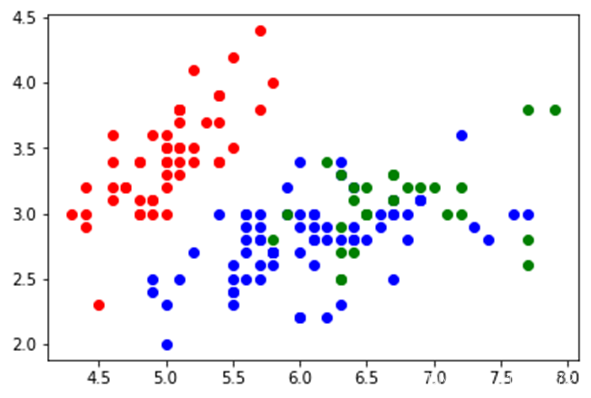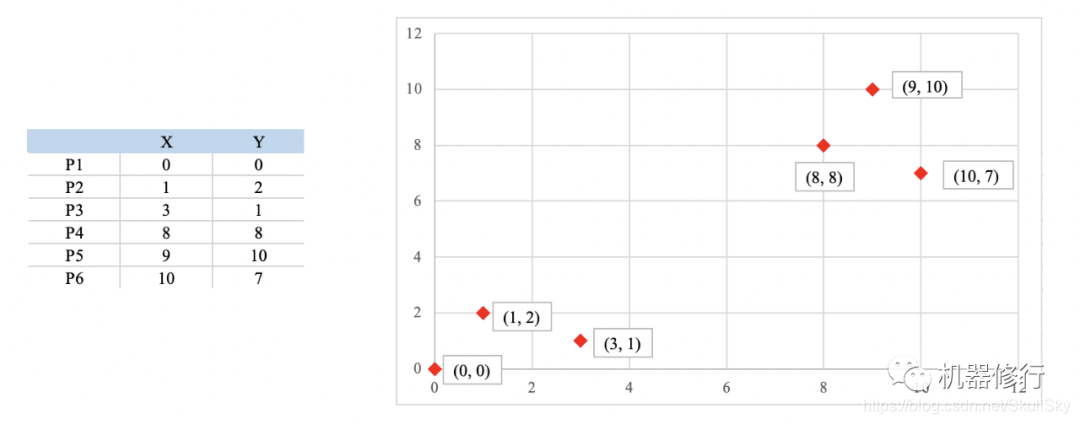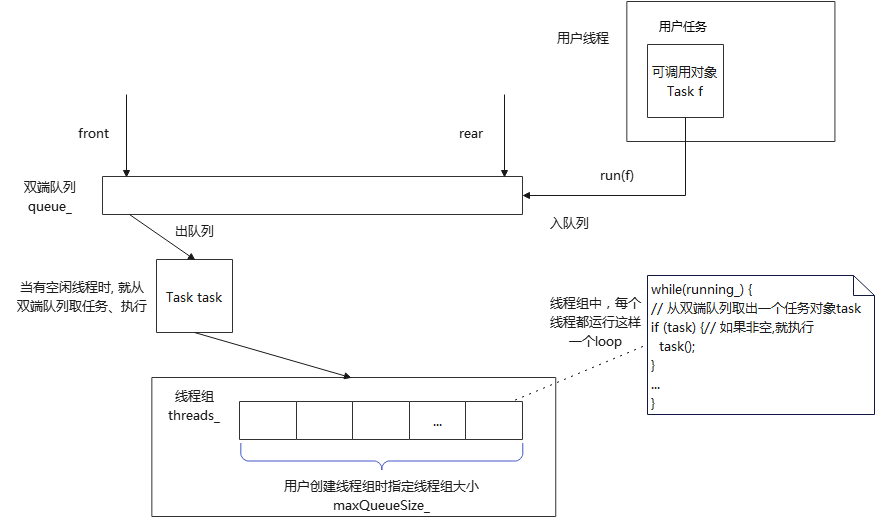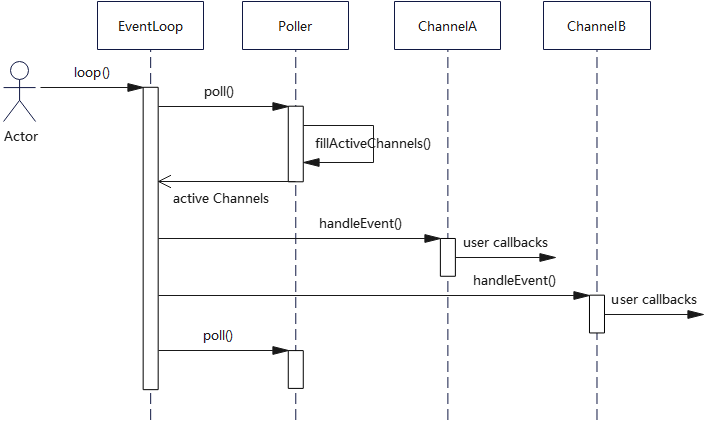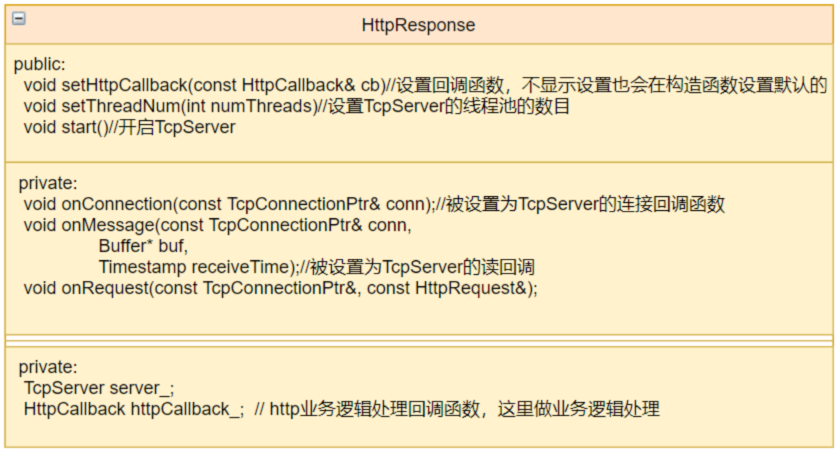原理
大家自行百度吧,我懒得码字了
推荐一下原理原理![]() https://blog.csdn.net/jinshengtao/article/details/30258833
https://blog.csdn.net/jinshengtao/article/details/30258833
代码
直接上代码了,看不懂,就参照一下原理
# author: wdq
# contact: 1920132572@qq.com
# datetime:2022/3/15 17:40
# software: PyCharm
import random
from collections import Counter
from typing import Listimport numpy as np
from numpy import ndarrayclass MeanShift:def __init__(self, nums: ndarray, band_width: float):""":param nums: 要划分的ndarray:param band_width: 窗口大小"""# 要划分的ndarrayself.__nums = nums# 窗口大小self.__band_width = band_width# 停止步长self.__stop_band_width = 10 ** -4 * self.__band_width# 访问数组self.__is_visited = [False] * self.__nums.shape[0]# 聚类中心self.__cluster_centers = []# 聚类self.__cluster = []def mean_shift(self) -> List[List[List[int]]]:# 判断是否所有点都被访问过while not self.__is_all_visited():my_member = []# 在没被访问的点随机选一个点start_point = random.choice([i for i in range(self.__nums.shape[0]) if not self.__is_visited[i]])my_mean = self.__nums[start_point]while True:# 得到到各点的距离,以及权重distance, gaussian = self.__get_shift(my_mean)# 找到在窗口的点in_the_area = self.__find__points(distance)# 保留当前的位置old_mean = my_mean.copy()# 得到新的位置my_mean = self.__get_new_mean(gaussian, in_the_area)# 将范围的点划到当次的聚类my_member.extend(in_the_area)# 更新当前的访问数组self.__update_visited(in_the_area)# 判断是否小于停止步长if self.__get_distance(old_mean, my_mean) < self.__stop_band_width:merge_width = None# 遍历当前聚类for i in range(len(self.__cluster_centers)):# 判断中心点离得太近if self.__get_distance(my_mean, self.__cluster_centers[i]) < self.__band_width / 2:merge_width = ibreak# 如果太近了就合并这2个聚类if merge_width is not None:# 合并中心点self.__cluster_centers[merge_width] = self.__get_new_center(my_mean,self.__cluster_centers[merge_width])# 合并聚类中的点self.__cluster[merge_width].extend(my_member)# 否则就添加一个聚类else:self.__cluster_centers.append(my_mean.tolist())self.__cluster.append(my_member)break# 返回分好类的结果return self.__get_result()def __is_all_visited(self) -> bool:""":return: 是否全部访问"""# 遍历访问数组for i in self.__is_visited:if not i:return Falsereturn Truedef __get_distance(self, start: any, end: any) -> float:""":param start: 起始点:param end: 终点:return: 两点之间的距离"""# 类型转换if type(start) != ndarray:start = np.array(start)if type(end) != ndarray:end = np.array(end)# 返回欧式距离return np.linalg.norm(start - end)def __get_shift(self, start: ndarray) -> (ndarray, ndarray):""":param start: 开始的点:return: 计算滑动的距离"""# 距离distance = np.zeros((self.__nums.shape[0], 1))# 权重gaussian = np.zeros((self.__nums.shape[0], 1))for i in range(distance.shape[0]):temp = self.__get_distance(start, self.__nums[i])gaussian[i] = self.__gaussian_kernel(temp, self.__band_width)distance[i] = tempreturn distance, gaussiandef __gaussian_kernel(self, distance: float, bandwidth: float) -> float:"""高斯核函数:param distance: 距离:param bandwidth: 窗口大小:return: 权重"""return (1 / (bandwidth * np.sqrt(2 * np.pi))) * np.exp(-0.5 * (distance / bandwidth) ** 2)def __get_new_mean(self, gaussian: ndarray, in_the_area: List[int]) -> ndarray:""":param gaussian: 权重:param in_the_area: 在区域的点:return:"""# 权重weight = 0.# 在范围的点new_mean = np.array([self.__nums[i].tolist() for i in in_the_area])for i in range(len(in_the_area)):new_mean[i] = new_mean[i] * gaussian[in_the_area[i]]weight += gaussian[in_the_area[i]]# 对范围的点进行加权,并算出漂移到的点return np.sum(new_mean, axis=0) / weight if weight != 0 else np.sum(new_mean, axis=0)def __find__points(self, distance: ndarray) -> List[int]:""":param distance: 距离ndarray:return: 在窗口大小内的点"""return [i for i, j in enumerate(distance) if j < self.__band_width ** 2]def __update_visited(self, in_the_area: List[int]) -> None:"""更新访问过的点:param in_the_area: 在窗口大小内的点:return:"""for i in in_the_area:self.__is_visited[i] = Truedef __get_new_center(self, mymean: ndarray, old_center: List[int]) -> List[int]:"""合并中心点:param mymean: 现在的中心点:param old_center: 以前的中心点:return:"""return [(i + j) / 2 for i, j in zip(mymean.tolist(), old_center)]def __get_result(self) -> List[List[List[int]]]:"""将结果分好类并返回这段代码比较丑陋,将就看看,不看也行,我自己都不想看大致意思就是找这些点应该分到那个类:return:"""count = []result = [[] for i in range(len(self.__cluster))]# 计数,计出每个点到每个聚类的次数for i in self.__cluster:count.append(dict(Counter(i)))belong = []# 遍历找出每个点到到那个聚类的最大值,那我们就可以认为它在那个聚类for num in range(len(self.__nums)):# 最大次数的索引index = 0for i in range(1, len(count)):if count[i].get(num, 0) > count[index].get(num, 0):index = ibelong.append(index)# 分类for i in range(len(self.__nums)):result[belong[i]].append(self.__nums[i].tolist())# 把空的聚类移除return [i for i in result if i]
测试代码
import matplotlib
from matplotlib import pyplot as plt
from sklearn import datasetsfrom MeanShift import MeanShiftmatplotlib.rcParams['font.sans-serif'] = ['SimHei']
matplotlib.rcParams['axes.unicode_minus'] = False
iris = datasets.load_iris() # 引入数据集
# 分的类不好就重新分,多试一哈
mean_shift = MeanShift(nums=iris.data, band_width=1.34) # 对于iris,窗口大小为1.34,别问为什么,别问,问就是好用
colors = ['red', 'green', 'blue', 'black', 'yellow']
a = mean_shift.mean_shift()
for i in range(len(a)):for j in a[i]:plt.scatter(j[0], j[1], c=colors[i])
plt.title("Mean-Shift")
plt.xlabel('萼片长度')
plt.ylabel('萼片宽度')
plt.show()"""___________.__ __ _____ _____ .__ ._.\__ ___/| |__ _____ ____ | | __ ______ _/ ____\___________ / \ |__| ____| || | | | \\__ \ / \| |/ / / ___/ \ __\/ _ \_ __ \ / \ / \| |/ \ || | | Y \/ __ \| | \ < \___ \ | | ( <_> ) | \/ / Y \ | | \||____| |___| (____ /___| /__|_ \/____ > |__| \____/|__| \____|__ /__|___| /_\/ \/ \/ \/ \/ \/ \/\/ """
运行结果
标准答案
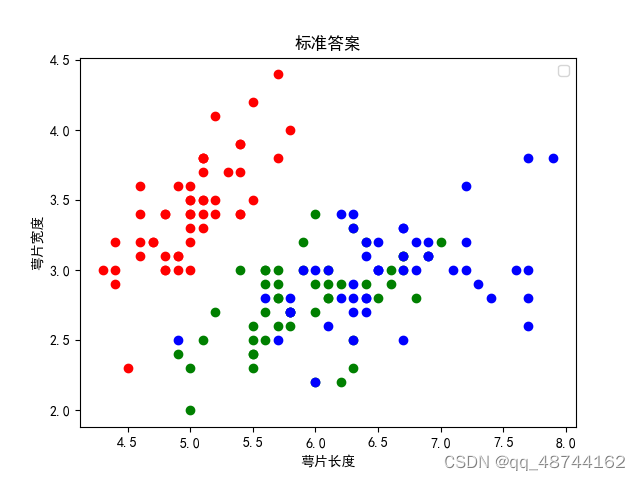
MeanShift算法

只用来学习,借鉴,错的话,欢迎批评和指导!
邮箱:cse.dqwu19@gzu.edu.cn

